Production Time: 2 days
Request Details: Scene creation using MOJIKAI’s cherry blossoms.
Tools Used: Blender, MOJIKAI
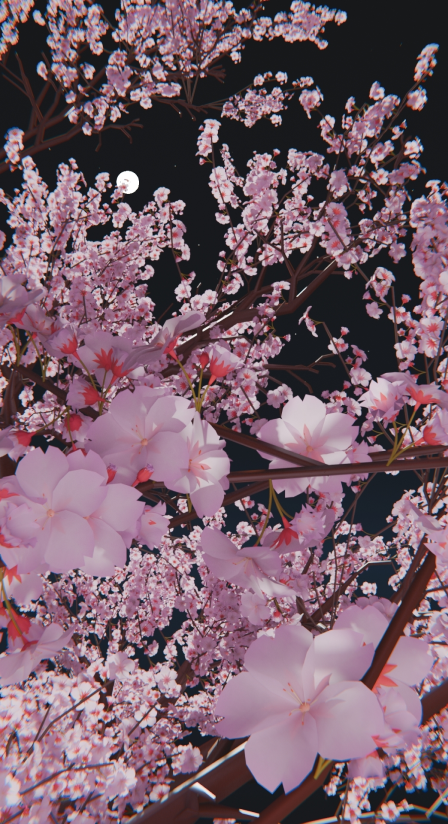
About the Work
This piece is a procedural cherry blossom tree created using Blender's geometry nodes.
The soft, organic form of cherry blossoms was reproduced through node-based computation and structural design, with a focus on achieving a fractal structure commonly found in nature.
・What is a fractal structure?
It refers to a structure where, as shown in Figure 1, similar shapes to the whole appear repeatedly when magnified.
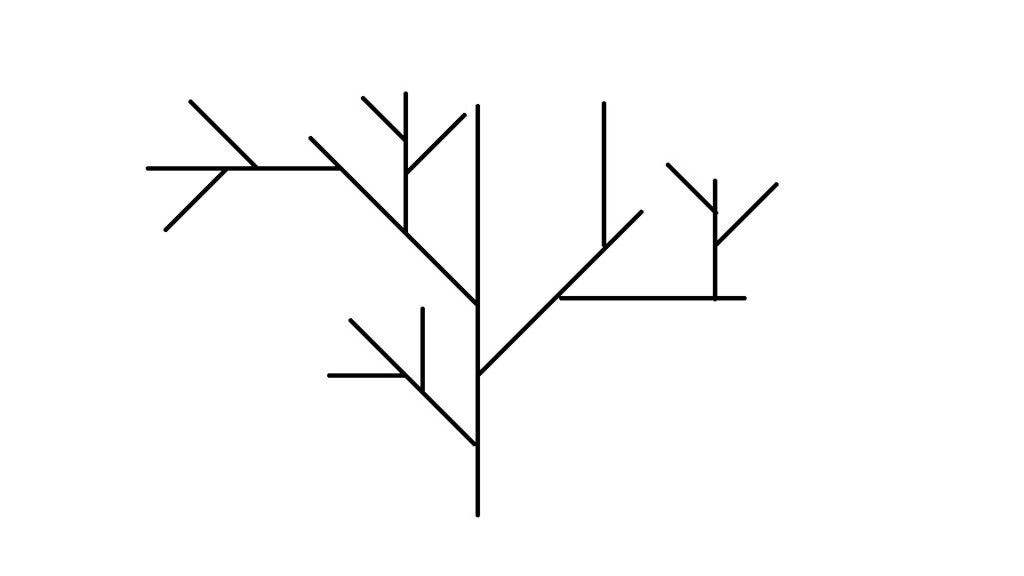
The arrangement of petals and branches incorporates a balanced mix of randomness and order, allowing for adjustments in density, layout, blossom quantity, and cherry blossom types. This results in a procedural model where nature and algorithm are harmoniously integrated.
Creation of TreeGenerator
The challenge in creating this cherry blossom tree was how to use nodes to express a more realistic procedural cherry blossom tree.
In this process, I focused on three key points:
① Trees in nature have a fractal structure.
② Since they follow a fractal structure, creating a single branch part and growing it step by step is sufficient.
③ The orientation of leaves (flowers) generally faces upward on their front side, and from the branch’s perspective, they rarely tilt inward past a perpendicular angle toward the trunk.
Based on points ① and ② above, I created a branch node group and connected them sequentially to reproduce a fractal structure.
As for ③, I configured the nodes to restrict the angle of the leaves attached to the branches, making it possible to adjust factors like leaf density and orientation.
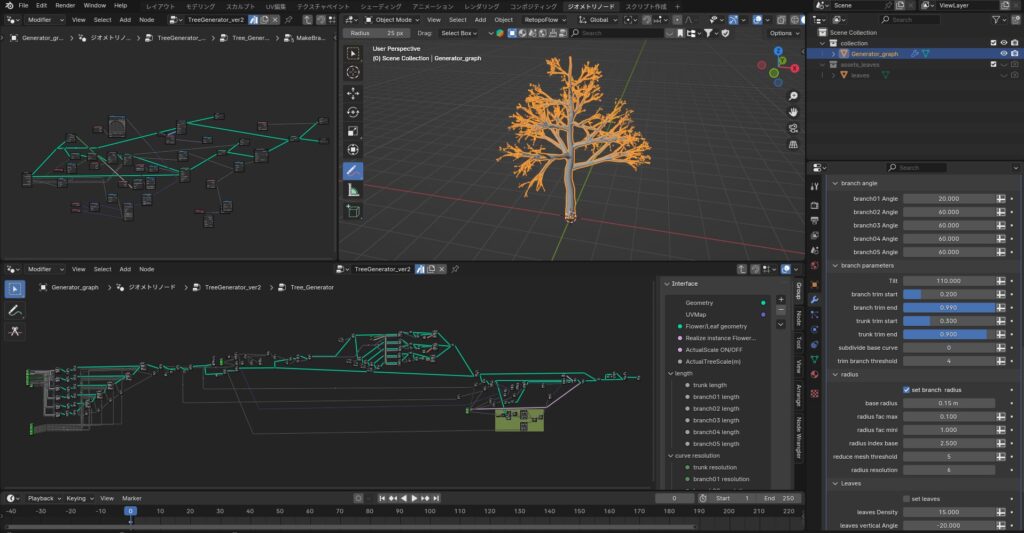
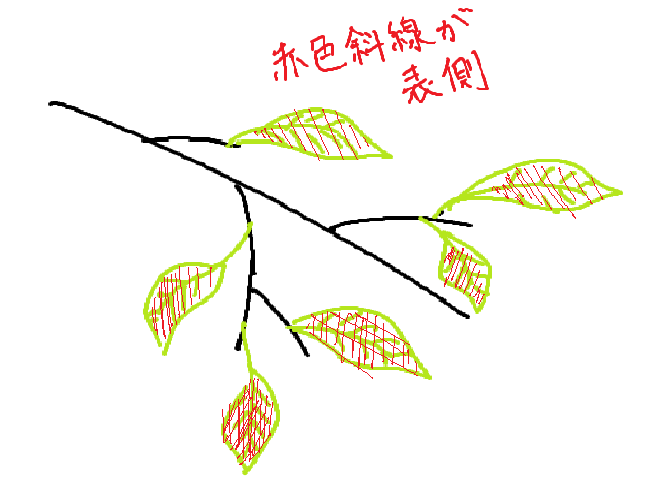
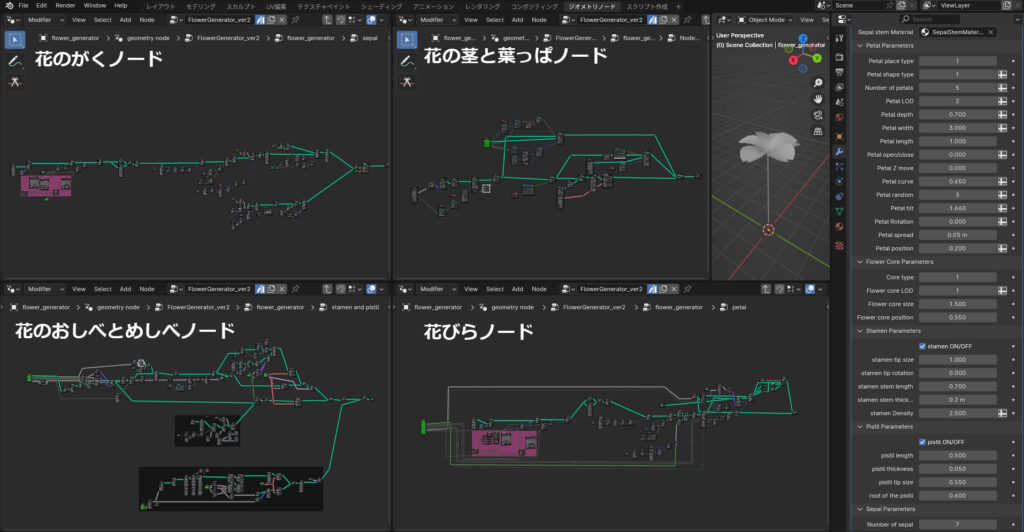
Creation of FlowerGenerator
The next challenge was how to create the flowers (leaves).
When trying to create the flower itself, there were various challenges, such as whether to build the entire structure with nodes or partially with objects, how detailed the flower should be, and how to reduce the polygon and object count. These were addressed by dividing the flower, as shown in Image 2, into petals, stem and leaves, calyx, and stamens/pistil. Each part was created with nodes and combined, enabling the creation of various shapes within a single node group.
